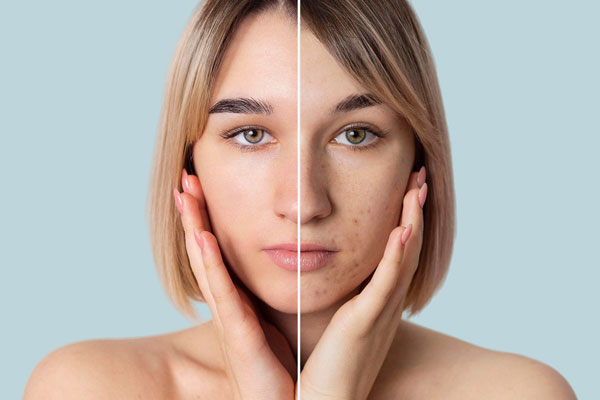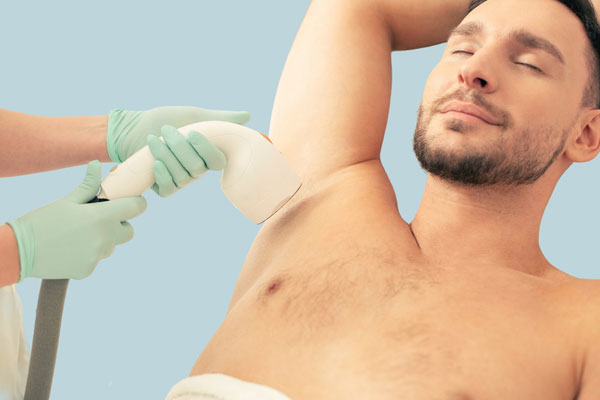Overview
What are milia?
Milia are tiny, firm cysts that form when skin cells or keratin become trapped beneath the surface of the skin. They are usually 1–2 mm in diameter and are painless, non-itchy, and dome-shaped.
Types of milia:
- Neonatal milia: Affect up to 50% of newborns, often appearing on the nose, cheeks, or forehead. They typically resolve within 2–4 weeks without treatment.
- Primary milia: Appear spontaneously in children or adults, usually on the face.
- Secondary milia: Develop after skin trauma, burns, blistering, rashes, cosmetic procedures, or prolonged sun exposure.
- Multiple eruptive milia: Rare cases where numerous cysts appear suddenly, often associated with certain medications or systemic conditions.
Symptoms and Causes
What are the signs of milia?
Milia are small, firm bumps that do not cause pain or discomfort. Key features include:
- White or yellowish colour
- Dome-shaped and smooth surface
- Usually 1–2 mm in size
- Often grouped in clusters, especially around the eyes, cheeks, and nose
What causes milia?
Milia form when keratin, a protein naturally found in the skin, becomes trapped under the outer layer of skin. Factors that contribute include:
- Blocked skin pores: Dead skin cells or keratin accumulate and form cysts.
- Skin trauma: Burns, blisters, rashes, cosmetic treatments, or injuries can trigger secondary milia.
- Sun damage: Chronic exposure to UV rays may increase the risk.
- Age-related skin changes: Slower skin cell turnover in older adults can cause milia.
- Genetic predisposition: Rarely, some people are more prone to recurrent milia.
- Certain medications: Drugs such as long-term corticosteroids may trigger cyst formation.
Diagnosis and Tests
Milia are typically diagnosed through a visual examination. A GP or dermatologist can usually identify them by considering their size, shape, texture, and location.
Additional tests may include:
- Dermatoscopy: Uses a magnifying device to examine the cysts in detail.
- Skin biopsy: Occasionally performed if diagnosis is unclear or to rule out other conditions such as whiteheads, syringomas, or basal cell carcinoma.
- HPV or viral testing: Rarely used, mainly if cysts are atypical or associated with other skin lesions.
Management and Treatment
Do milia need treatment?
Most milia, especially in infants, resolve spontaneously without intervention. Adults may seek treatment for cosmetic reasons or if the cysts persist.
Treatment options
- Topical retinoids: Creams that increase skin cell turnover, helping milia gradually resolve over several weeks.
- Mechanical extraction: A dermatologist can safely remove milia using a sterile needle or blade, reducing risk of scarring.
- Cryotherapy or laser therapy: Rarely used for multiple or persistent lesions; they destroy cysts with minimal skin damage.
- Chemical peels: Promote natural skin exfoliation and may prevent new milia.
- Gentle skincare: Avoid harsh scrubs, abrasive treatments, or squeezing the cysts to prevent infection and scarring.
Aftercare
Keep the area clean and moisturised, use sunscreen on treated areas to prevent UV-related recurrence, and avoid picking or scratching the cysts.
Outlook/Prognosis
Milia generally have an excellent outlook. In infants, they often clear on their own within a few weeks without any treatment. In adults, they may persist longer but can be safely and effectively removed by a dermatologist. When underlying factors, such as skin trauma or blocked pores, are addressed, recurrence is uncommon.
Prevention
While not all milia can be prevented, these strategies can reduce the risk:
- Maintain a gentle skincare routine with non-comedogenic products.
- Protect skin from sun exposure using SPF and protective clothing.
- Treat skin injuries promptly to prevent secondary milia.
- Limit use of heavy creams or oils that can clog pores.
- Attend regular dermatology check-ups for persistent or recurrent milia.






